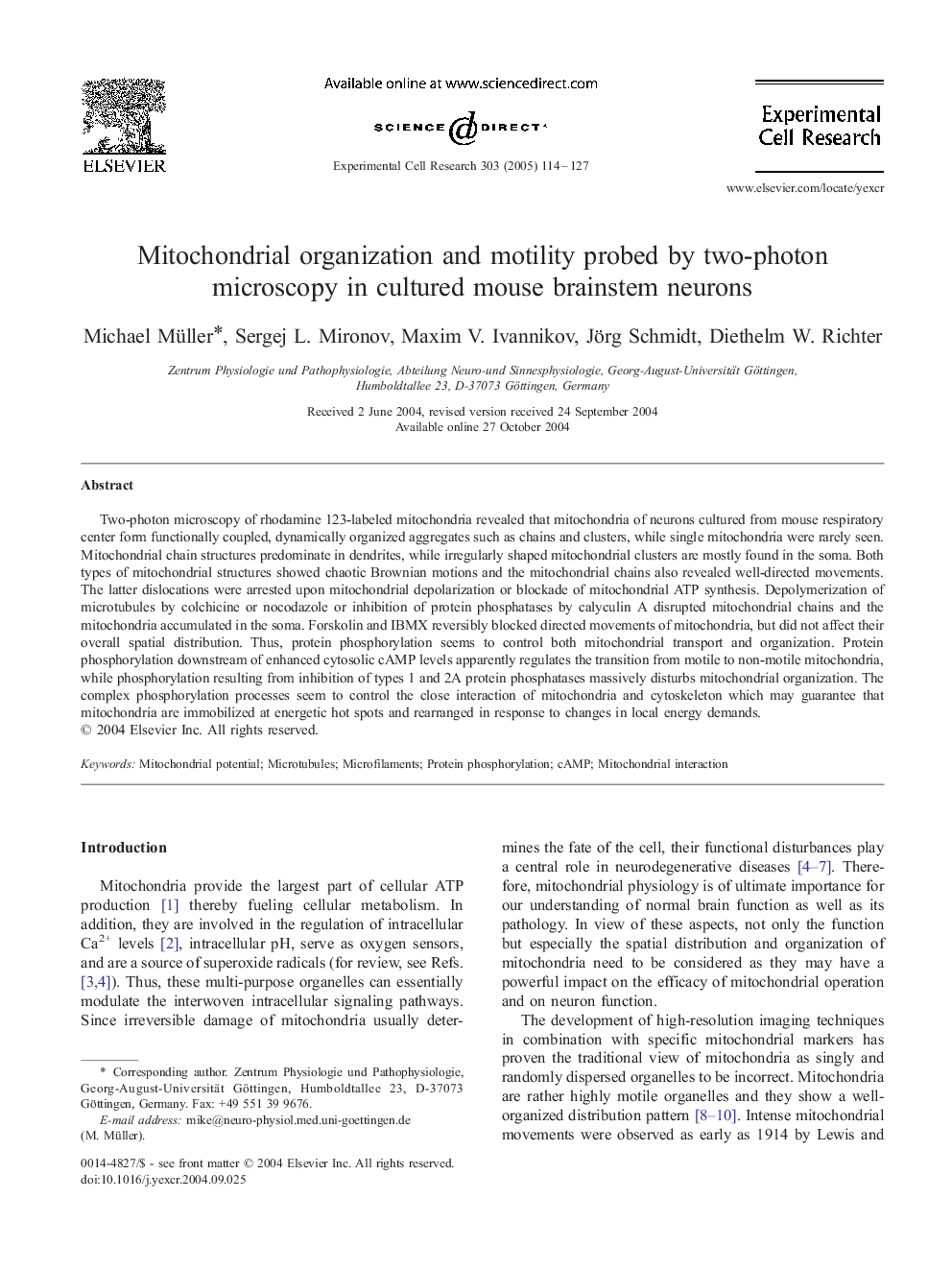| Article ID | Journal | Published Year | Pages | File Type |
|---|---|---|---|---|
| 10905098 | Experimental Cell Research | 2005 | 14 Pages |
Abstract
Two-photon microscopy of rhodamine 123-labeled mitochondria revealed that mitochondria of neurons cultured from mouse respiratory center form functionally coupled, dynamically organized aggregates such as chains and clusters, while single mitochondria were rarely seen. Mitochondrial chain structures predominate in dendrites, while irregularly shaped mitochondrial clusters are mostly found in the soma. Both types of mitochondrial structures showed chaotic Brownian motions and the mitochondrial chains also revealed well-directed movements. The latter dislocations were arrested upon mitochondrial depolarization or blockade of mitochondrial ATP synthesis. Depolymerization of microtubules by colchicine or nocodazole or inhibition of protein phosphatases by calyculin A disrupted mitochondrial chains and the mitochondria accumulated in the soma. Forskolin and IBMX reversibly blocked directed movements of mitochondria, but did not affect their overall spatial distribution. Thus, protein phosphorylation seems to control both mitochondrial transport and organization. Protein phosphorylation downstream of enhanced cytosolic cAMP levels apparently regulates the transition from motile to non-motile mitochondria, while phosphorylation resulting from inhibition of types 1 and 2A protein phosphatases massively disturbs mitochondrial organization. The complex phosphorylation processes seem to control the close interaction of mitochondria and cytoskeleton which may guarantee that mitochondria are immobilized at energetic hot spots and rearranged in response to changes in local energy demands.
Related Topics
Life Sciences
Biochemistry, Genetics and Molecular Biology
Cancer Research
Authors
Michael Müller, Sergej L. Mironov, Maxim V. Ivannikov, Jörg Schmidt, Diethelm W. Richter,
